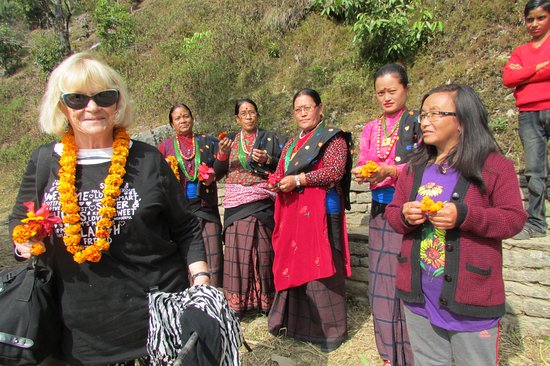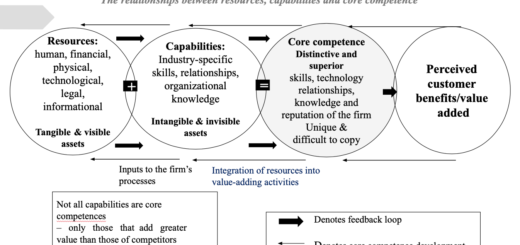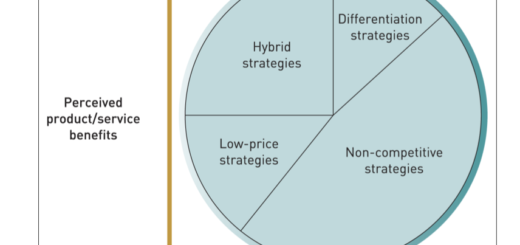Warm Hospitality in Nepal
Contents
Embracing Warm Hospitality in Nepal: A Journey of Heartfelt Connections
Country renowned not only for its breathtaking landscapes and cultural heritage but also for its warm and inviting hospitality. Nestled in the lap of the Himalayas, Nepal warmly welcomes travelers with open arms, offering an experience that goes beyond exploration, allowing you to forge lasting connections and create cherished memories.

A Culture of Hospitality
Hospitality is deeply ingrained in the cultural fabric of Nepal. Nepalese people are known for their genuine warmth, friendliness, and generosity towards visitors. Whether you’re staying in a traditional homestay or interacting with locals in bustling marketplaces, you’ll be greeted with genuine smiles and a genuine desire to make you feel at home.
Homestays: A Home Away from Home
Experience the true essence of Nepalese hospitality by staying in a traditional homestay. Immerse yourself in the daily lives of local families, savor authentic home-cooked meals, and engage in heartfelt conversations that offer unique insights into the local way of life.
Welcoming Tea Culture
In Nepal, the serving of tea is more than just a beverage; it’s an expression of hospitality and respect. Experience the warmth of Nepalese tea culture as you’re welcomed into homes, guesthouses, and tea houses with a steaming cup of sweet, aromatic tea, fostering a sense of comfort and connection.
The Generosity of Nepalese Cuisine
Nepalese cuisine is a reflection of the country’s diverse cultural heritage. From traditional dal-bhat (lentil soup with rice) to momo (dumplings) and gundruk (fermented leafy greens), every dish is prepared with love and shared generously, inviting you to savor the flavors and traditions of Nepal.
Festivals and Celebrations
Nepal’s calendar is filled with vibrant festivals and celebrations that showcase the country’s rich cultural tapestry. Whether it’s the joyous festivities of Dashain and Tihar or the exuberant Holi, participating in these events allows you to witness firsthand the warmth, camaraderie, and hospitality that permeate Nepalese society.
Friendly Trekking Routes
Nepal is a paradise for trekkers, and along the popular trekking routes, you’ll encounter friendly faces and warm hospitality in the tea houses and lodges that dot the trails. The camaraderie and support offered by local guides and fellow trekkers create a sense of unity and make every step of the journey memorable.
Community-Based Tourism Initiatives
Across Nepal, community-based tourism initiatives have been established, allowing visitors to directly engage with local communities. These initiatives provide opportunities to learn traditional crafts, participate in farming activities, and contribute to the local economy, all while fostering meaningful connections with the people of Nepal.
Unforgettable Connections
Beyond the stunning landscapes and historical sites, it’s the connections forged with the people of Nepal that leave an indelible mark on travelers’ hearts. The genuine warmth and kindness extended by the Nepalese people create memories that last a lifetime, making Nepal a destination that beckons visitors to return time and time again.
Home Stay In Nepal
Nepal’s warm hospitality is a testament to the genuine and welcoming nature of its people. From the moment you arrive, you’ll be embraced with open arms and experience a level of hospitality that goes beyond expectations. Soak in the warmth, forge meaningful connections, and let the genuine kindness of the Nepalese people make your journey an unforgettable one.
Here are some of the top homestays in Nepal, each offering a unique and authentic experience:
Sirubari Homestay
Located in the Sirubari village of Syangja district, this homestay offers a glimpse into the Gurung community’s lifestyle. Experience warm hospitality, cultural performances, and traditional meals, and participate in activities like farming and handicrafts.
Bandipur Homestay
Situated in the charming town of Bandipur, this homestay allows you to immerse yourself in Newari culture. Stay in beautifully preserved traditional houses, indulge in Newari cuisine, and explore the town’s architectural treasures and panoramic views.
Ghalegaun Homestay
Nestled in the Annapurna region, Ghalegaun showcases the unique Gurung culture. Enjoy the stunning mountain views, participate in cultural programs, taste local delicacies, and engage in activities like honey hunting and traditional agricultural practices.
Sauraha Homestay (Chitwan)
Located in the vicinity of Chitwan National Park, this homestay offers a chance to experience Tharu culture. Stay with local families, learn about their traditions, engage in Tharu dance, and take part in activities like bird watching and jungle walks.
Nuwakot Homestay
Nuwakot, a historical town near Kathmandu, provides a glimpse into the medieval era. Stay in traditional houses with intricate woodwork, visit the Nuwakot Durbar (palace) and nearby temples, and engage with locals to learn about their heritage.
Namobuddha Homestay
Situated in the hilly region near Kathmandu, Namobuddha is a sacred Buddhist site. Experience the serene atmosphere, stay in monasteries or local homes, participate in meditation sessions, and witness Buddhist rituals and practices.
Panauti Homestay
Panauti, a traditional Newari town, offers a chance to explore ancient architecture and cultural heritage. Stay in traditional Newari houses, witness vibrant festivals, visit ancient temples, and learn about Newari cuisine and craftsmanship.
Ghandruk Homestay
Ghandruk, in the Annapurna region, is a Gurung village with stunning mountain views. Stay in traditional stone houses, enjoy warm hospitality, savor local cuisine, and embark on treks to nearby viewpoints and Gurung villages.









Hey people!!!!!
Good mood and good luck to everyone!!!!!
Hey people!!!!!
Good mood and good luck to everyone!!!!!
Hey people!!!!!
Good mood and good luck to everyone!!!!!
Hello!
Good cheer to all on this beautiful day!!!!!
Good luck 🙂
horizontal balancing machines
Understanding Horizontal Balancing Machines: A Comprehensive Overview
Horizontal balancing machines are specialized devices designed to assess and rectify the imbalance of rotating equipment components. These machines play a crucial role in various industries, ensuring the smooth operation of machinery by eliminating vibrations that can lead to excessive wear, energy loss, and potential failures. Understanding the design, functionality, and applications of these machines is essential for both manufacturers and users.
What are Horizontal Balancing Machines?
Essentially, horizontal balancing machines are engineered to address the dynamic or static unbalance of rotors used in a wide array of mechanical systems. They consist of a support structure that houses the rotor and a drive mechanism that spins the rotor at specified speeds. During this process, specialized measurement systems detect vibrations or forces acting on the rotor, allowing operators to determine the necessary corrective weights to restore balance.
Types of Balancing Machines
Horizontal balancing machines are categorized primarily into two types: soft bearing and hard bearing machines. Each design has unique characteristics, advantages, and applications, making them suitable for various balancing tasks.
Soft Bearing Balancing Machines
Soft bearing machines utilize flexible support mechanisms to accommodate the rotors during the balancing process. These supports may consist of spring suspensions, allowing for relatively lower frequencies of oscillation compared to the operating speed of the rotor. This flexibility permits a broader range of operational speeds, typically starting from 200 RPM.
The use of soft bearings is particularly advantageous in applications requiring robust vibration isolation. The construction of these machines is generally simpler, making them accessible for in-house manufacturing by companies looking to meet specific balancing needs without incurring high costs. Examples of soft bearing machines include those designed for balancing drive shafts, turbochargers, and other rotary components commonly found in automotive and industrial applications.
Hard Bearing Balancing Machines
On the other hand, hard bearing machines feature fixed supports that are rigidly constructed. This design ensures that the natural frequencies of the support systems significantly exceed the rotor’s operating speed, allowing for high precision in balancing across a broader range of rotor sizes and configurations.
Hard bearing machines are equipped for high-speed applications and are ideal for complex components due to their ability to maintain stability and accuracy even at low speeds. They are commonly used in scenarios where precision is paramount, such as in high-fidelity instrumentation and aerospace applications.
Core Components of Balancing Machines
Regardless of design, the primary components of horizontal balancing machines include:
Support Structure: This includes the frame and the supports that hold the rotor in place during balancing.
Drive Mechanism: Typically involves an electric motor that spins the rotor at designated speeds.
Measurement Systems: These are essential for detecting vibrations and forces acting on the rotor. They can include strain gauges, accelerometers, and optical sensors.
Data Processing Unit: This component computes the necessary corrective actions to achieve balance, taking into account the data collected from the measurement systems.
Advantages of Using Horizontal Balancing Machines
Investing in horizontal balancing machines delivers numerous advantages for businesses:
Increased Equipment Lifespan: By ensuring that rotors are adequately balanced, these machines reduce operational stresses that can lead to premature wear and failure.
Improved Performance: Balanced rotors contribute to enhanced efficiency and energy utilization, minimizing waste and operational costs.
Reduction in Downtime: Regular balancing sessions prevent unexpected failures, subsequently lowering the chances of costly downtime due to repair or replacement needs.
Enhanced Safety: Imbalanced rotors can pose severe safety risks due to potential mechanical failure. Proper balancing mitigates these risks, safeguarding operators and equipment.
Applications of Horizontal Balancing Machines
Horizontal balancing machines find their application across diverse industries, including:
Aerospace: Essential for balancing critical components of aircraft engines and rotors.
Automotive: Used extensively for balancing drive shafts, crankshafts, and turbine rotors in vehicles.
Industrial Machinery: Employed in manufacturing plants to balance various rotating equipment, reducing vibrations that could impact product quality.
HVAC Systems: Helpful in balancing fan impellers, ensuring efficient operation and noise reduction.
DIY Horizontal Balancing Machines
For those interested in creating their own horizontal balancing machines, it is essential to follow industry standards and best practices to ensure performance and safety. Comprehensive guidance on designing and constructing DIY balancing machines can be invaluable for independent manufacturers. Factors to consider include selecting the appropriate materials, implementing a reliable drive system, and ensuring the integrity of the measuring components.
Amateur builders can refer to resources that outline common designs and the mathematical calculations needed to determine balancing parameters effectively. Engaging with communities and forums focused on balancing machine design can also provide insights and tips from experienced builders.
Conclusion
Horizontal balancing machines are indispensable tools in ensuring the operational efficiency and longevity of rotating machinery in numerous industries. By understanding their designs, applications, and benefits, users can make informed choices about integrating these machines into their maintenance routines. Whether through commercial purchases or DIY projects, achieving optimal rotor balance leads to enhanced performance, reduced downtime, and increased safety within industrial operations.
In summary, the importance of horizontal balancing machines cannot be overstated, and their role in modern industry continues to grow as businesses seek greater efficiency and reliability in their operations.
I am often to blogging and i really appreciate your content. The article has really peaks my interest. I am going to bookmark your site and keep checking for new information.
Оптом ткани из Турции, Китая и России с прямыми поставками
ткани оптом от производителя недорого https://www.my-tkani-optom.ru/ .
Get professional results with a free rubber stamp maker online
rubber stamp maker online https://www.make1-stamps-online.com/ .
Design your own stamps effortlessly with our rubber stamp maker online
make stamp online http://mystampready-constructor1.com/ .
Алкоголь на дом за один час — проверенный сервис
алкоголь на дом [url=dostavka-alkogolya-moskva-wwworld.ru]dostavka-alkogolya-moskva-wwworld.ru[/url] .
Полное сопровождение и строительство деревянного дома под ключ без стресса
деревянные дома под ключ [url=http://derevyannye-doma-pod-klyuch-msk.ru/]http://derevyannye-doma-pod-klyuch-msk.ru/[/url] .
Этапы строительства загородного дома: от инженерных изысканий до благоустройства участка
загородный дом под ключ [url=http://stroitelstvo-zagorodnyh-domov178.ru/]http://stroitelstvo-zagorodnyh-domov178.ru/[/url] .
I know this if off topic but I’m looking into starting my own weblog and was curious what all is needed to get setup? I’m assuming having a blog like yours would cost a pretty penny? I’m not very internet savvy so I’m not 100 positive. Any tips or advice would be greatly appreciated. Appreciate it
Създай безупречна визия с нашите дамски тениски и модерни аксесоари
дамски тениски с къс ръкав [url=teniski-damski.com]teniski-damski.com[/url] .
Экономьте до 30% с маркетплейсом по лизингу благодаря автоматизированному подбору
маркетплейсы по лизингу [url=https://lizingovyy-agregator.ru/]https://lizingovyy-agregator.ru/[/url] .
Полный спектр услуг по строительству деревянных домов любой сложности
строительство деревянных домов цена [url=https://stroitelstvo-derevyannyh-domov78.ru/]строительство деревянных домов цена[/url] .
Easy DIY home appliance repair, which will help you understand the situation.
microwave sparking or arcing issues [url=https://www.technirepair.com/microwave-repair-made-easy-tips-for-common-issues/]https://www.technirepair.com/microwave-repair-made-easy-tips-for-common-issues/[/url] .
Подари си удобство с нашите дамски тениски от естествени материи
модерни дамски тениски [url=https://www.teniski-damski.com/]https://www.teniski-damski.com/[/url] .
Hi there! I know this is somewhat off topic but I was wondering which blog platform are you using for this site? I’m getting tired of WordPress because I’ve had issues with hackers and I’m looking at options for another platform. I would be awesome if you could point me in the direction of a good platform.